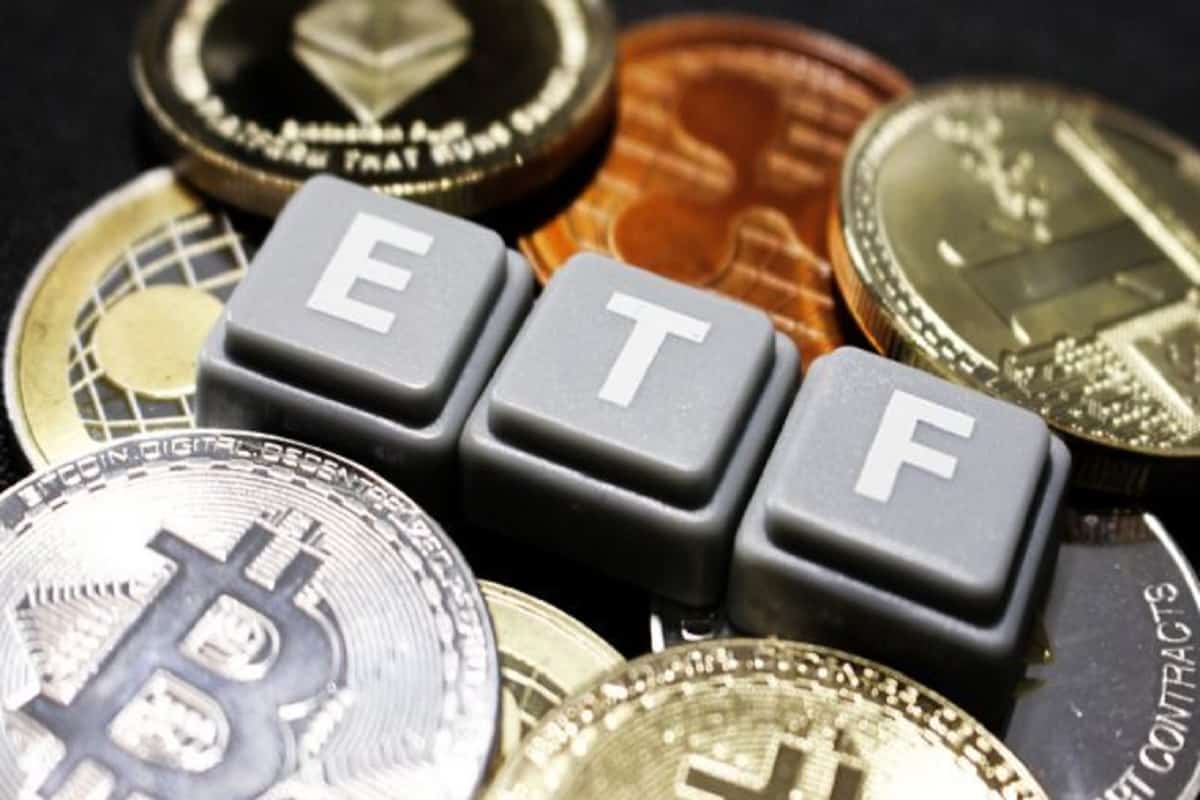
The alluring possibilities of decentralized finance and cryptocurrency’s revolutionary technology have captivated investors globally. However, alternative avenues exist for those hesitant about direct ownership to participate in this dynamic market.
It would still give you a good understanding of how the crypto market works, and you can guard yourself against the high volatility of the cryptocurrency market and, therefore, avoid taking substantial losses if and when things go south.
We are discussing how to invest in crypto without buying crypto, a different approach that allows investors to benefit from the crypto wave without holding the crypto coins.
We will explore the allure of crypto, the hesitations associated with direct ownership, and the alternative path of indirect investment. By understanding the options available, investors can confidently navigate the crypto landscape, leveraging various financial instruments for exposure to this dynamic market.
Understanding Indirect Crypto Investment
Investing in cryptocurrency is only some people’s cup of tea. We are not discouraging anyone from embarking on a crypto journey and working towards financial independence. Investing in cryptocurrency is a challenging gig.
You need technical knowledge about blockchain and how cryptocurrency coins are traded on different exchanges. Learn relevant analysis techniques essential to analyze the market and make informed decisions.
Only some have the patience or the time to start from scratch and work their way up. They will probably make some mistakes even if they are willing to learn all these new things.
Some may recover from committing such mistakes, while others may feel disheartened because they lost the money they couldn’t afford to lose and search for other alternatives.
What we will discuss here are the alternatives that will keep you in touch with the crypto market but can prove instrumental in saving you from facing the direct volatility of the crypto market.
Understanding the distinction between direct and indirect methods is crucial for informed decision-making.
ETFs, CFDs, Options, and Crypto-Related stocks
- Exchange-traded funds (ETFs) are investment funds that trade on stock exchanges, mirroring the performance of a specific index or asset.
- Contracts for Difference (CFDs) and Options, on the other hand, are financial derivatives that allow investors to speculate on the price movements of cryptocurrencies without owning them.
- Crypto-related stocks represent shares in companies operating in the blockchain and cryptocurrency space.
Difference between owning crypto directly and indirect methods
The difference between direct and indirect ownership of your cryptocurrency is that you acquire and hold the crypto tokens through indirect ownership. Direct ownership means you have complete control over your assets; you can trade and sell them whenever you want. However, it also means storing it in a safe crypto wallet and ensuring the security of your crypto funds to the best of your abilities.
Indirect ownership methods allow you to gain exposure to the crypto market without holding the actual coins. The financial instruments like ETFs, CFDs, or stocks you have chosen are run by companies that will provide you with the ability to safely store your cryptocurrency and ensure it remains invulnerable to any outside attack.
Exploring Various Options
We discussed some indirect options for owning cryptocurrencies in the previous section. We will expand further on what those options entail and if there are other possible avenues you can explore for indirect investment in the crypto market, including the ones mentioned earlier.
Stocks and ETFs of Crypto-Related Companies

One approach to indirect crypto investment involves delving into the stocks and ETFs of companies directly involved in the blockchain and cryptocurrency. Significant players include blockchain technology firms, mining companies, cryptocurrency exchanges, and software developers. Individuals can gain exposure to the crypto market by investing in these companies without directly holding digital assets.
Diversification is a crucial advantage when opting for stocks and ETFs of crypto-related companies. Rather than relying solely on the performance of individual cryptocurrencies, investors can spread their risk across a range of businesses contributing to the blockchain ecosystem.
Diversification can be particularly appealing for those seeking exposure to the crypto market while minimizing the impact of volatility associated with specific coins.
Comparing traditional ETFs with crypto-specific ones adds another layer of choice. Traditional ETFs often comprise a mix of asset classes, including stocks and bonds. In contrast, crypto-specific ETFs focus exclusively on digital assets.
Investors must evaluate the risk-return profiles of these options, considering factors such as historical performance, fees, and the underlying assets within the fund.
Cryptocurrency ETFs

Cryptocurrency ETFs provide an avenue for investors to indirectly participate in the crypto market by holding shares in a fund that tracks the performance of digital assets. These ETFs can be categorized into single-token and basket ETFs.
Single-token ETFs focus on one specific cryptocurrency, such as Bitcoin or Ethereum. While this provides targeted exposure, it also amplifies the risk associated with the performance of that particular asset.
Basket ETFs, on the other hand, include a diversified selection of cryptocurrencies. The approach aims to spread risk across multiple digital assets, offering a more balanced investment strategy.
Choosing the proper crypto ETF involves carefully considering factors like tracking errors, fees, and the composition of the underlying assets. Investors should be aware of potential drawbacks, including the lack of direct ownership of the underlying cryptocurrencies and the regulatory uncertainties surrounding crypto ETFs in some jurisdictions.
Derivatives

For those comfortable with a more sophisticated approach, derivatives such as Contracts for Difference (CFDs) and options provide tools for speculating crypto price movements without owning the underlying assets.
CFDs allow investors to profit from the difference between a contract’s opening and closing prices, effectively betting on whether the crypto’s value will rise or fall. Options, meanwhile, offer the right to buy or sell an asset at a predetermined price within a specified timeframe.
While derivatives can be powerful instruments for gaining exposure to crypto price movements, they come with higher risks. Novice investors should approach derivatives cautiously, as the potential for substantial gains and losses is elevated.
Other Avenues

Beyond traditional financial instruments, there are innovative ways to engage with the crypto market indirectly. Play-to-earn games and Micro-Earning platforms offer opportunities for small-scale crypto exposure.
Play-to-earn games leverage blockchain technology to enable players to earn cryptocurrency within the game environment. While this can be a fun and engaging way to accumulate digital assets, it comes with the caution of market volatility and the need to consider the game’s mechanics carefully.
Micro-earning platforms allow users to earn small amounts of cryptocurrency through various online activities, such as completing surveys or tasks. While these methods offer accessibility, they also come with the challenge of managing earnings in a market known for its price fluctuations.
In exploring these various options, investors can tailor their approach to indirect crypto investment based on their risk tolerance, financial goals, and level of engagement with the crypto space. Each avenue has unique advantages and considerations, requiring careful evaluation before making investment decisions.
Pros and Cons of Direct vs Indirect Crypto Investing
| Approach | Pros | Cons |
| ETFs | Instant diversification across multiple cryptocurrencies | No direct ownership of underlying assets |
| Crypto-Related Stocks | Exposure to the blockchain industry without owning crypto | Less exposure to individual cryptocurrency price movements |
| Derivatives (CFDs, Options) | Leverage for potentially higher gains | Higher risk of significant losses due to leverage |
| Play-to-Earn Games | A fun and engaging way to earn small amounts of crypto | The value of earned crypto can be volatile |
| Micro-Earning Platforms | Earn crypto through everyday activities | Small earning amounts |
Navigating the Risks and Making Wise Choices
We have discussed numerous times the risks involved with investing in cryptocurrency. The crypto market’s highly volatile and unpredictable nature makes it a risky financial investment tool. Still, its growing popularity and the opportunity it provides to turn around your financial portfolio from rags to riches is why many people are showing a keen interest in investing in cryptocurrencies.
You have to acknowledge the risks involved even if you are not directly investing in the crypto market because even with indirect investment, there are risks involved that might cause you to lose sleep over the possibility of losing your investment amount due to the inherently volatile nature of the crypto market.
Therefore, to manage this volatility effectively, investors must establish clear risk management strategies, including setting realistic profit and loss targets, diversifying investments, and staying informed about market developments.
Thorough research and due diligence are essential for sound decisions, whether evaluating underlying assets in ETFs, assessing company health for stocks, or understanding derivative mechanics.
Staying informed about regulatory developments, technological advancements, and market trends is crucial, necessitating engagement with reputable news sources, participation in online communities, and seeking insights from industry experts.
Final Thoughts
Indirect crypto investment offers significant benefits for cautious investors. Understanding options, including stocks, ETFs, and derivatives, enables exposure to the crypto market based on your risk tolerance.
Diversification through blockchain-related stocks and ETFs helps you avoid crypto volatility, while cryptocurrency ETFs provide simplified exposure.
Derivatives like CFDs and options add sophistication, demanding caution due to high risks. Innovative avenues, such as play-to-earn games, offer accessible small-scale exposure, balancing engagement with potential earnings.
Ultimately, it all comes down to your appetite and whether or not you want to become a direct investor of cryptocurrencies or take the cautious approach and start with indirect investment options and see how they pan out.




